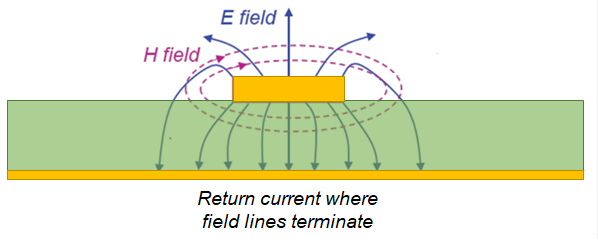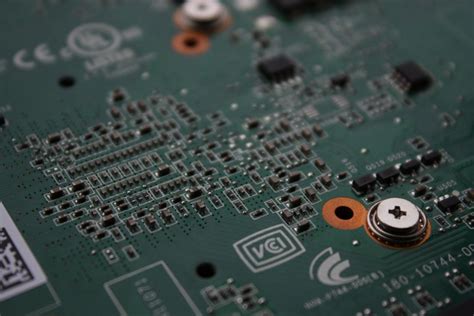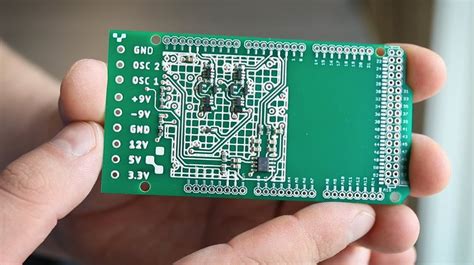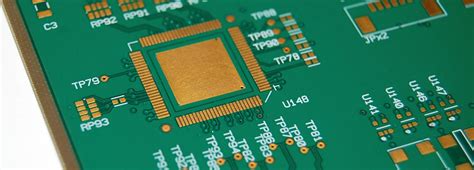Isola pcb material
Understanding the Benefits of Isola PCB Material in Modern Electronics
In the rapidly evolving world of modern electronics, the choice of materials plays a crucial role in determining the performance, reliability, and longevity of electronic devices. Among the myriad of materials available, Isola PCB material has emerged as a prominent choice for manufacturers and designers alike. This preference is not without reason, as Isola materials offer a range of benefits that cater to the demanding needs of contemporary electronic applications.
To begin with, Isola PCB materials are renowned for their exceptional thermal performance.
As electronic devices become more compact and powerful, they generate significant amounts of heat, which can adversely affect their functionality and lifespan. Isola materials are engineered to withstand high temperatures, thereby ensuring that the electronic components remain stable and operational even under strenuous conditions. This thermal resilience is particularly advantageous in applications such as automotive electronics and aerospace systems, where reliability is paramount.
In addition to thermal management, Isola PCB materials also excel in terms of electrical performance.
They are designed to provide excellent signal integrity, which is crucial for high-speed and high-frequency applications. The materials exhibit low dielectric constant and low dissipation factor, which minimize signal loss and ensure efficient transmission of electrical signals. This characteristic is especially beneficial in telecommunications and data communication sectors, where maintaining signal clarity and speed is essential.
Moreover, Isola PCB materials are highly versatile, offering a wide range of options to suit different application needs.
Whether it is for rigid, flexible, or rigid-flex PCBs, Isola provides materials that can be tailored to specific design requirements. This versatility allows designers to optimize their products for various factors such as weight, flexibility, and durability, thereby enhancing the overall performance of the electronic device.
Another significant advantage of Isola PCB materials is their environmental compliance.
In an era where sustainability is increasingly important, Isola has committed to producing materials that meet stringent environmental standards. Their products are often halogen-free and comply with regulations such as RoHS (Restriction of Hazardous Substances), which restricts the use of certain hazardous materials in electronic products. This compliance not only helps manufacturers meet legal requirements but also aligns with the growing consumer demand for eco-friendly products.
Furthermore, Isola’s commitment to quality and innovation ensures that their materials are consistently reliable and at the forefront of technological advancements.
The company invests heavily in research and development to continuously improve their product offerings, ensuring that they meet the ever-changing demands of the electronics industry. This dedication to innovation means that manufacturers using Isola materials can be confident in the quality and performance of their products.
In conclusion, the benefits of Isola PCB material in modern electronics are manifold.
From superior thermal and electrical performance to versatility and environmental compliance, Isola materials provide a comprehensive solution for the challenges faced by today’s electronic designers and manufacturers. As the electronics industry continues to advance, the role of high-quality materials like those offered by Isola will undoubtedly remain integral to the development of cutting-edge technologies. By choosing Isola PCB materials, manufacturers can ensure that their products not only meet current standards but are also prepared to tackle future challenges in the ever-evolving landscape of modern electronics.

Comparing Isola PCB Material with Other Substrates: A Comprehensive Guide
In the realm of printed circuit board (PCB) manufacturing, the choice of substrate material is a critical decision that can significantly impact the performance, reliability, and cost-effectiveness of the final product. Among the myriad of options available, Isola PCB materials have garnered attention for their unique properties and advantages. To fully appreciate the benefits of Isola materials, it is essential to compare them with other commonly used substrates, such as FR-4, Rogers, and ceramic materials.
Isola materials are renowned for their high-performance characteristics, particularly in applications requiring superior thermal and electrical properties.
These materials are engineered to provide excellent thermal management, which is crucial for high-frequency and high-speed digital applications. In comparison, the traditional FR-4 substrate, while widely used due to its cost-effectiveness and versatility, often falls short in high-frequency applications due to its relatively higher dielectric constant and loss tangent. This can lead to signal integrity issues, making Isola a more suitable choice for advanced electronic applications.
Moreover, Isola materials offer enhanced mechanical stability and reliability, which are vital for applications subjected to harsh environmental conditions.
This is particularly advantageous when compared to ceramic substrates, which, although offering excellent thermal conductivity and electrical insulation, can be brittle and prone to mechanical failure under stress. Isola’s advanced resin systems and glass fabric reinforcements provide a robust alternative that balances performance with durability.
Transitioning to the aspect of manufacturability, Isola materials are designed to be compatible with standard PCB fabrication processes, which can lead to reduced production costs and time. This is a significant advantage over Rogers materials, which, while offering superior high-frequency performance, often require specialized processing techniques that can increase manufacturing complexity and cost. The compatibility of Isola materials with existing manufacturing infrastructure makes them an attractive option for companies looking to optimize production efficiency without compromising on quality.
Furthermore, Isola’s commitment to innovation and sustainability is reflected in their development of environmentally friendly materials that comply with global regulations.
This is increasingly important in today’s market, where environmental considerations are becoming a key factor in material selection. In contrast, some traditional materials may not meet the stringent environmental standards required by modern electronic manufacturers, positioning Isola as a forward-thinking choice for eco-conscious companies.
In addition to these technical and environmental advantages, Isola offers a diverse range of materials tailored to specific application needs, from high-speed digital to RF/microwave applications.
This versatility allows designers to select the most appropriate material for their specific requirements, ensuring optimal performance across a wide range of applications. While other substrates may offer specialized benefits, the comprehensive portfolio of Isola materials provides a one-stop solution for diverse design challenges.
In conclusion, when comparing Isola PCB materials with other substrates, it becomes evident that Isola offers a compelling combination of performance, reliability, manufacturability, and environmental responsibility. While each substrate has its own set of advantages and limitations, Isola’s ability to deliver high-performance solutions across a broad spectrum of applications makes it a preferred choice for many in the electronics industry. As technology continues to evolve, the demand for advanced materials like those offered by Isola is likely to grow, underscoring the importance of making informed decisions in substrate selection.

Innovations in Isola PCB Material: What to Expect in the Future
In the rapidly evolving world of electronics, printed circuit boards (PCBs) serve as the backbone of countless devices, from simple gadgets to complex computing systems. Among the various materials used in PCB manufacturing, Isola PCB materials have gained significant attention due to their superior performance and reliability. As technology continues to advance, innovations in Isola PCB materials are poised to play a crucial role in shaping the future of electronic devices. Understanding these innovations requires a closer look at the current trends and future expectations in the field.
To begin with, Isola PCB materials are renowned for their excellent thermal and electrical properties, which are essential for high-performance applications.
These materials are designed to withstand extreme conditions, making them ideal for use in industries such as aerospace, automotive, and telecommunications. As the demand for more efficient and compact electronic devices grows, the need for advanced PCB materials that can support higher frequencies and faster data transmission rates becomes increasingly important. Consequently, Isola has been at the forefront of developing materials that meet these stringent requirements.
One of the key innovations in Isola PCB materials is the development of low-loss laminates.
These materials are engineered to minimize signal loss, which is critical for maintaining the integrity of high-speed data transmission. By reducing signal attenuation, low-loss laminates enable the design of PCBs that can operate at higher frequencies without compromising performance. This innovation is particularly significant in the context of 5G technology, where the demand for faster and more reliable communication networks is driving the need for advanced PCB materials.
In addition to low-loss laminates, Isola is also focusing on enhancing the thermal management capabilities of its PCB materials.
As electronic devices become more powerful, they generate more heat, which can adversely affect their performance and longevity. To address this challenge, Isola is developing materials with improved thermal conductivity, allowing for more efficient heat dissipation. This innovation not only helps in maintaining optimal operating temperatures but also contributes to the overall reliability and durability of electronic devices.
Moreover, sustainability is becoming an increasingly important consideration in the development of PCB materials.
Isola is committed to reducing the environmental impact of its products by exploring eco-friendly materials and manufacturing processes. This includes the use of halogen-free laminates, which are designed to minimize the release of harmful substances during production and disposal. By prioritizing sustainability, Isola is aligning itself with the broader industry trend towards greener electronics.
Looking ahead, the future of Isola PCB materials is likely to be shaped by ongoing research and development efforts aimed at addressing emerging challenges in the electronics industry. As devices continue to shrink in size while increasing in complexity, the demand for materials that can support miniaturization without sacrificing performance will grow. Isola is expected to continue innovating in this area, developing materials that offer a balance of electrical, thermal, and mechanical properties to meet the needs of next-generation electronic devices.
In conclusion, innovations in Isola PCB materials are set to play a pivotal role in the future of electronics. By focusing on low-loss laminates, enhanced thermal management, and sustainability, Isola is well-positioned to meet the evolving demands of the industry. As technology continues to advance, these innovations will be instrumental in enabling the development of more efficient, reliable, and environmentally friendly electronic devices.
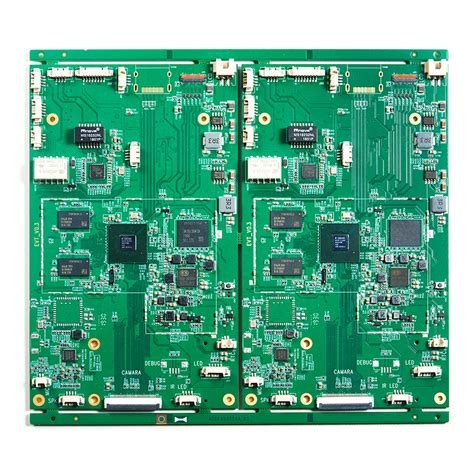
How to Choose the Right Isola PCB Material for Your Project
When embarking on the development of a printed circuit board (PCB) for your project, selecting the appropriate Isola PCB material is a critical decision that can significantly impact the performance, reliability, and cost-effectiveness of your final product. Isola, a leading manufacturer of high-performance PCB materials, offers a diverse range of options tailored to meet various application requirements. To make an informed choice, it is essential to consider several key factors that will guide you in selecting the most suitable material for your specific needs.
First and foremost, understanding the electrical performance requirements of your project is crucial.
Different applications demand varying levels of signal integrity, dielectric constant, and loss tangent. For high-frequency applications, such as RF and microwave circuits, materials with low dielectric constants and low loss tangents are preferred to minimize signal loss and ensure efficient transmission. Isola offers materials like the I-Tera MT40 and Astra MT77, which are specifically designed to cater to such high-frequency needs, providing excellent electrical performance.
In addition to electrical properties, thermal management is another vital consideration.
The operating environment of your PCB can subject it to significant temperature variations, necessitating materials with robust thermal performance. Isola’s materials, such as the FR408HR and IS410, are engineered to withstand high temperatures, offering superior thermal reliability and stability. These materials are particularly beneficial for applications involving high-power components or those that operate in harsh environments, where thermal management is paramount.
Moreover, mechanical properties should not be overlooked when selecting an Isola PCB material.
The mechanical strength and flexibility of the material can influence the durability and longevity of the PCB, especially in applications subject to mechanical stress or vibration. Materials like the IS620 and IS680 are designed to provide enhanced mechanical performance, ensuring that the PCB can endure physical demands without compromising its structural integrity.
Cost considerations also play a significant role in the decision-making process.
While high-performance materials offer numerous advantages, they often come at a higher price point. It is essential to balance the performance benefits with budget constraints, ensuring that the chosen material aligns with the financial parameters of the project. Isola provides a range of materials at different price levels, allowing for flexibility in selecting a material that meets both performance and budgetary requirements.
Furthermore, manufacturability is a practical aspect that should be taken into account.
The ease with which a material can be processed and fabricated into a PCB can affect production timelines and costs. Materials that are compatible with standard manufacturing processes and equipment can streamline production and reduce potential complications. Isola’s materials are designed with manufacturability in mind, offering compatibility with a wide range of fabrication techniques.
In conclusion, choosing the right Isola PCB material for your project involves a comprehensive evaluation of electrical, thermal, mechanical, and cost factors, as well as manufacturability considerations. By carefully assessing these aspects and understanding the specific demands of your application, you can select a material that not only meets the technical requirements but also aligns with your project’s budget and production capabilities. This strategic selection process will ultimately contribute to the success and reliability of your PCB, ensuring optimal performance in its intended application.


